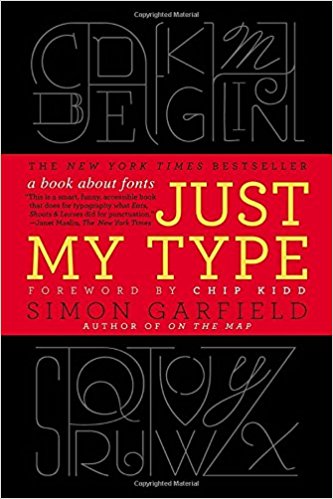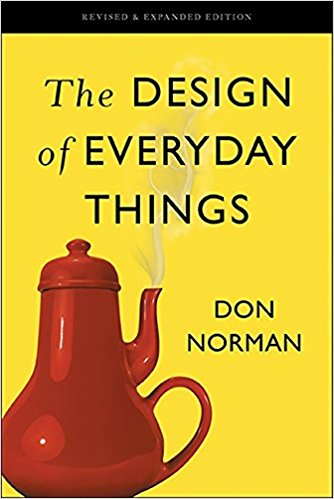Home — Collections — Best web design books recommended by professionals and entrepreneurs
Best web design books recommended by professionals and entrepreneurs
Table of Contents
 Web design, as any design, should be unnoticeable. Once you notice it, for good or for bad, web design is almost a failure. We’ve interviewed lots of people working in web design, web development, business owners that provide these services for their clients.
Web design, as any design, should be unnoticeable. Once you notice it, for good or for bad, web design is almost a failure. We’ve interviewed lots of people working in web design, web development, business owners that provide these services for their clients.
As you might know already, there are some design rules that every designer needs to have in mind:
1. Don’t make users think
Of course, this is actually the title of one of the books, but it became a mantra for all the utility minded designers. The web pages you build should not need explanations, the actions available should be obvious and simple.
2. Keep It Simple Stupid
Do not make the web page overly complicated, do not put a lot of information on it, focus the attention of the user on the action that you want. This is not something we manage to do at The CEO Library just yet, but it’s a work in progress.
Of course, these are not all the rules, this is why you need to read the books below, but it’s a good, start. If you are really interested in web design, here is the list of web design books recommended by the entrepreneurs on our site, in no particular order:
The Elements of User Experience: User-Centered Design for the Web – Jesse James Garrett
Kaci Lambe Kai says about this book:
“These three books are about how people actually use design in their lives. They helped me understand this very basic idea: There are no dumb users, only bad designers. Take the time to create based on how your design will be interacted with. Test it. Iterate. That’s how you become a good designer.”
It makes sense. When this book was published, 10 years ago, it defined the principles of web design. It is now updated to better understand how user experience changed with the modern web apps and sites.
Don’t Make Me Think: A Common Sense Approach to Web Usability – Steve Krug
This is, probably, the most important book for a web designer that wants to do more than mix and match colors. This book is for a web designer that wants to make usable, real websites, that people want to use, not look at them with a confused gaze.
“Don’t make me think” is such an important book that the expression it used as the title became a rule of design in itself.
Here’s some interesting tidbit of information: Steve Krug intended to make this book an example of concise writing, to make a point out of it. It should be read in about 2 hours, during a flight or a longer commute. Frankly, I don’t remember if it took me more than two hours, but you can try and see if the author lived up to his promise.
How To Build Websites That Sell: The Scientific Approach to Websites – Peep Laja
Sometimes you just want to put your thoughts on the web and you’ll be happy with that. Or you’ll want to create a work of art in a website form and put it online, for everyone to see it.
What if you want to get more out of it? What if you want to make money with your website? Or what if your web design clients want to make more money with their website?
This book takes a more scientific approach to website creatin, trying to dispel the myths marketing people want you to think.
Just My Type: A Book About Fonts – Simon Garfield
When you start doing web design, you think of colors, shapes, you rarely think of the fonts. But once you start using the internet, you realize how important it is to be able to read the text you see on a website.
How many times you’ve landed on a page where you couldn’t read the text because the font was too small, too thin or too white against the white background?
Simon Garfield, the author of this book, embarks on a mission to tell you the stories around fonts we use everyday, the reasoning behind them and he tries to teach you how you should think about the fonts in your life.
The Design of Everyday Things – Don Norman
Do you ever think of what to press on a remote control for your TV? Or how to sit on a chair? If you do, you just met a designer that has no idea how to design every day, easy to use objects.
This applies to web design as well. The users of your sites don’t need to think about what to do next, it should be as obvious as possible what’s the action to take to continue their visit.
This books was really interesting when I first read it because it uses case studies to find out the psychology behind what we, as humans, consider good and bad design. It not only addresses design, but also goes through other fields, like ergonomy or behavioral psychology.
“For people interested in designing or building software products: The Design of Everyday Things by Don Norman and The Lean Product Playbook by Dan Olsen. Both books have informed my product sense and helped me make decisions about great UX”. This is what Julia Enthoven, co-founder at Kapwing, said about this book.
The Little Black Book of Design – Adam Judge
Finally, have some fun as well!
This is a short book, filled with funny quotes about design and engineering. If you want, this is the Art of War for design, since it contains a lot of sage advice in easy to read format.
This is actually a book you might want to have around for a short commute or even a longer trip.





